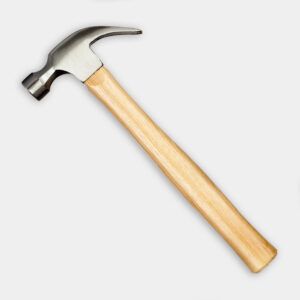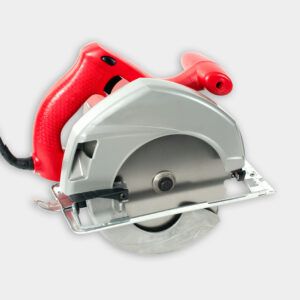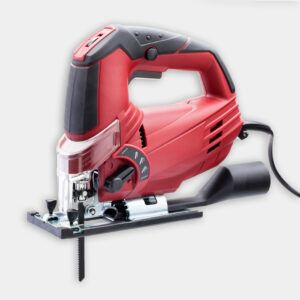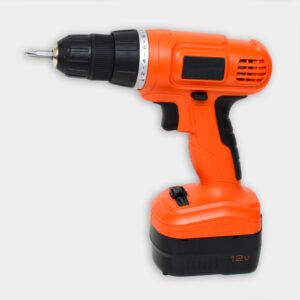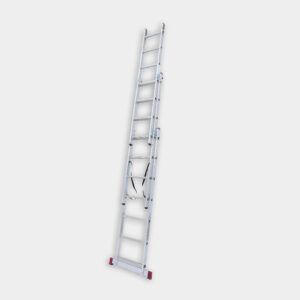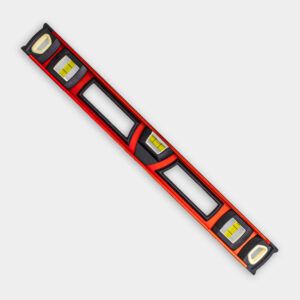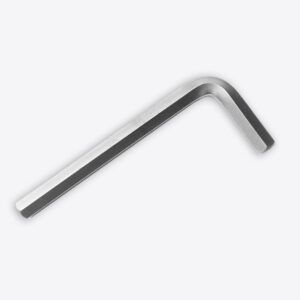We may be compensated if you purchase through links on our website. Our team is committed to delivering honest, objective, and independent reviews on home products and services.
Building a rock climbing wall for your home is an exciting project that can provide endless hours of fun and fitness for the whole family. Our guide walks you through the process of planning, constructing, and maintaining your very own indoor rock climbing wall, transforming an ordinary room into an adventure zone.
Planning Your DIY Rock Climbing Wall Project
Careful planning is key to a successful DIY rock climbing wall. Take the time to think about all aspects of your project before beginning construction.
Choosing the Right Wall Location
Select a wall that can safely support the weight of the climbing structure and climbers. Avoid areas near doors that could swing open and hit climbers. Gauge the room’s layout and check that there’s enough space for safe climbing and falling. Basements, garages, or spare rooms often make ideal locations for home climbing walls.
For an added layer of safety, place the climbing wall where there will be minimal foot traffic. This location will reduce the chances of someone accidentally interfering with a climber. Additionally, make sure the ceiling height is sufficient to prevent head injuries.
Determining the Size and Scope of Your Climbing Wall
The size of your climbing wall will depend on available space and the age of your climbers. Toddlers may be content with a smaller area, while teenagers and adults will need more climbing space.
When determining the size, also take into account the types of climbing challenges you want to offer. Vertical walls are more straightforward to construct, but adding angled sections or overhangs can increase the difficulty and variety of the climbing routes.
Materials for Building a Rock Climbing Wall
Gathering the right materials will help you create a sturdy and safe climbing wall. Here’s what you’ll need.
Selecting the Right Plywood
Choose 3/4-inch cabinet-grade plywood with one finished side for your climbing surface. The number of sheets required will depend on the size of your wall. This thickness provides a solid base for mounting holds and can support the weight of climbers.
Choose high-quality plywood because it will withstand the wear and tear caused by climbing. Additionally, check that the plywood is free of imperfections such as knots, which can weaken the structure.
Choosing Appropriate Climbing Holds
Invest in a set of climbing holds with T-nuts and bolts. These come in various shapes, sizes, and colors to create diverse climbing routes. Purchase extra T-nuts and bolts to fill all the holes you’ll drill, allowing for future adjustments to your climbing routes.
Climbing holds come in different styles, including jug holds, pinches, crimps, and slopers. Mixing these styles will create a varied and interesting climbing experience. Additionally, purchase footholds designed to provide secure footing.
Additional Materials
In addition to plywood and climbing holds, you’ll need the following:
- 3-inch screws
- 5-inch screws
- Drill
- Jigsaw
- Level
- Paint and paintbrushes
- Pencil
- Sandpaper
- Stud finder
- Tape measure
Step-by-Step Guide To Constructing Your Climbing Wall
Follow these steps to build your DIY rock climbing wall:
Preparing the Wall
Begin by locating the wall studs using a stud finder. Mark their positions vertically using a level as a guide. If you’re not covering the entire wall, finish your climbing area with a stud at each edge for proper support.
Triple-check the positions of the wall studs to avoid errors that could compromise the wall’s stability.
Installing Furring Strips
Cut 1-by-2-inch furring strips to cover each wall stud from floor to ceiling. Attach these strips to the wall over each stud using 3-inch screws. This creates a frame for mounting the plywood and provides space behind the climbing surface for bolts.
Furring strips should be evenly spaced to distribute the weight evenly. They act as a support frame, so the measurements should be exact for proper alignment of the climbing wall.
Mounting the Plywood
Prepare your plywood sheets by marking where they will cover each furring strip and any electrical outlets or vents. Create an 8-by-8-inch grid on the plywood, starting 6 inches from the bottom and avoiding areas that will cover the furring strips. Drill holes at each grid intersection from the finished side of the plywood.
Use a jigsaw to cut out openings for outlets or vents, creating free-form shapes that can serve as additional climbing holds. Sand the edges of these openings for safety. Once prepared, mount the plywood to the furring strips using 5-inch screws, checking that they penetrate through to the wall studs for maximum security.
Drilling Holes and Installing T-Nuts
After mounting the plywood, hammer T-nuts into each pre-drilled hole from the back side of the plywood. These T-nuts will securely hold the bolts for your climbing holds, allowing for easy route rearrangement as climbers’ skills improve.
Installing T-nuts correctly helps the climbing holds stay secure even under pressure. Test a few holds to check that they are firmly in place and can support the weight of a climber.
Creating a Safe Climbing Environment
Safety is paramount when building a home climbing wall. Take these steps to create a safe climbing experience.
Installing Proper Flooring and Padding
Install soft flooring under your climbing wall. A carpeted room with crash pads offers the best protection. Place crash pads directly under the climbing area, covering enough floor space to catch a falling climber from any angle.
Crash pads should be thick and spacious enough to cushion falls from various heights. Add extra padding in high-risk areas.
Establishing Climbing Rules and Guidelines
Create and post clear rules for using the climbing wall. These should include the following:
- Never walk under a climber.
- Always use a spotter.
- Don’t use a hold at the same time as another climber.
- Practice safe falling techniques.
Teach climbers how to fall safely, including tucking arms across the chest, landing on flexed knees, and rolling to absorb shock.
Customizing Your Rock Climbing Wall
Make your climbing wall unique and challenging with these customization ideas:
- Adding features for different skill levels: For beginners, include larger, easier-to-grip holds placed closer together. For more advanced climbers, add smaller holds, create overhangs, or install a sloped section for more of a challenge. Rotate and rearrange holds periodically to keep the climbing experience fresh and engaging.
- Incorporating training tools: Add fingerboards, campus boards, or pull-up bars around your climbing wall for additional training opportunities. These tools can help climbers build strength and improve their climbing skills.
- Painting and decorating your wall: Paint your climbing wall with bright, fun colors to make it a stylish focal point in the room. This not only improves the visual appeal but can also help climbers visualize different routes. Applying a durable paint will protect the plywood from wear and tear. Mark routes with different colors or patterns to guide climbers at various skill levels.
Maintaining and Upgrading Your DIY Climbing Wall
Regular maintenance helps your climbing wall remain safe and enjoyable.
Regular Safety Checks
Inspect your climbing wall weekly. Check for loose holds, damaged plywood, or worn padding. Tighten any loose bolts and replace damaged components immediately to prevent accidents. Addressing these issues promptly maintains the wall’s structural integrity and safety.
Expanding and Modifying Your Wall Over Time
As climbers’ skills improve, expand or modify your wall. Add new sections, change the angle of existing panels, or create more complex routes by rearranging holds. This keeps the climbing experience fresh and challenging for all users.
Incorporate new features or upgrade old ones to help the wall evolve with the climbers’ abilities, providing continuous growth opportunities.

